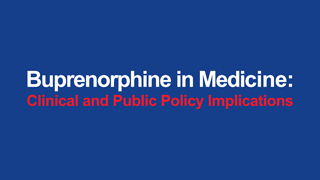Roadblock on the health IT superhighway: E-prescribing and the controlled substances act
DOI:
https://doi.org/10.5055/jom.2007.0002Keywords:
Controlled Substances, e-prescribing, Health Information Technology, prescription diversionAbstract
Electronic prescribing technology enables healthcare providers access to more complete information regarding patient’s medication history including prescriptions written by other healthcare providers. President Bush has put forth the goal of electronic health records for most Americans by 2014. Yet, regulatory roadblocks may be preventing further progress toward achieving these goals. The Drug Enforcement Agency (DEA) must modify the Controlled Substances Act (CSA) to keep pace with technology. It is time to move from discussions and hearings to piloting e-prescribing of controlled substances.References
eHealth Initiative: Electronic Prescribing: Toward Maximum Value and Rapid Adoption. Avaialble at www.ehealthinitiative.org/initiatives/erx/. Accessed April 15, 2007.
Pharmacy Regulatory Information, State of Alaska. http://www.surescripts.com/pharmacy/regulatory.aspx?nav=&ptype=pharmacy&state=2. Accessed August 24, 2007.
Grossman JM, Gerland A, Reed MC, et al.: Physicians’ experiences using commercial e-prescribing systems. Health Aff. 2007; 26(3): w393-w404.
Lapane KL, Whittemore K, Rupp MT, et al.: Maximizing the effectiveness of e-prescribing between physicians and community pharmacies. Final Progress Report submitted to AHRQ on January 28, 2007. http://healthit.ahrq.gov/portal/server.pt?open= 514&objID=5554&mode=2&holderDisplayURL=http://prodportallb.ahrq.gov:7087/publishedcontent/publish/communities/k_o/knowledge_library/features_archive/features/evaluation_of_ahrq_and_cms_funded_e_prescribing_ pilot_projects.html. Accessed August 28, 2007
Drug Abuse Act: 21 USC §§801-970.
Drug Enforcement Administration: ARCOS Data, Report 4. Cumulative Distribution in Grams per 100K Population. 2005. http://www.deadiversion.usdoj.gov/arcos/retail_drug_ summary/2005/05_rpt4.pdf. Accessed August 24, 2007.
Joranson DE, Ryan KM, Gilson AM, et al.: Trends in medical use and abuse of opioid analgesics. JAMA. 2000; 283(13): 1710-1714.
IMS Health, US Top10 Products by Prescription 2006: Available at http://www.imshealth.com/ims/portal/front/articleC/0,2777,6599_80411799_80413615,00.html. Accessed March 16, 2007.
Substance Abuse and Mental Health Services Administration, Office of Applied Studies. Drug Abuse Warning Network, 2005: National Estimates of Drug-Related Emergency Department Visits. DAWN Series D-29, DHHS Publication No. (SMA) 07-4256, Rockville, MD, 2007.
Simoni-Wastila L, Zuckerman IH, Singhal PK, et al.: National estimates of exposure to prescription drugs with addiction potential in community-dwelling elders. Subst Abus. 2006; 26(1): 33-42.
Adams E, Kopstein A: The nonmedical use of prescription drugs in the United States. In Cooper J, Czechowicz D, Molinari S, Petersen R (eds.): Impact of Prescription Drug Diversion Control Systems on Medical Practice and Patient Care. NIDA Research Monograph 131. Rockville, MD: National Institute on Drug Abuse, 1993.
Schifano F, Deluca P, Baldacchino A: Online availability of dextropropoxyphene over time, 2003-2005. Cyberpsychol Behav. 2006; 9(4): 404-409.
Promoting Pain Relief and Preventing Abuse of Pain Medications: A Critical Balancing Act: A Joint Statement from 21 Health Organizations and The Drug Enforcement Administration. Available at http://www.ama-assn.org/ama1/pub/upload/mm/455/jointstatement.pdf. Accessed March 16, 2007.
Joranson DE, Carrow GM, Ryan KM, et al.: Pain management and prescription monitoring. J Pain Symptom Manage. 2002; 23(3): 231-238.
Stratton HC: Government regulatory influences on opioid prescribing and their impact on the treatment of pain of nonmalignant origin. J Pain Symptom Manage. 1996; 11(5): 289-298.
Richard J, Reidenberg MM: The risk of disciplinary action by State Medical Boards against physicians prescribing opioids. J Pain Symptom Manage. 2005; 29(2): 206-212.
VanHaaren AM, Lapane KL, Hughes CM: Effect of triplicate prescription policy on benzodiazepine administration in nursing home residents. Pharmacotherapy. 2001; 21(10): 1159-1166.
Collins TM, Zimmerman DR: Programs for monitoring inappropriate prescribing of controlled drugs: evaluation and recommendations. Am J Hosp Pharm. 1992; 49(7): 1765-1768.
Wastila L, Bishop C: The influence of multiple copy prescription programs on analgesic utilization. J Pharm Care Pain Symptom Control. 1996; 4(3): 3-19.
Fink JS, Vivian JC, Keller Reid K (eds.): Pharmacy Law Digest. St. Louis, MO: Facts and Comparisons, 1999.
Kirking DM, Thomas JW, Ascione FJ, et al.: Detecting and preventing adverse drug interactions: the potential contribution of computers in the pharmacies. Soc Sci Med. 1986; 22: 1-8.
Yamamoto LG, Wiebe RA: Improving medical communication with facsimile [fax] transmission. Am J Emerg Med. 1989; 7: 203-208.
Smolarek RT, Alexander MR, Solomon DK, et al.: Facsimile machines for medication order transmission. Top Hosp Pharm Manage. 1991; 11: 70-77.
Van Arsdale RW, Schad R: Evaluation of a facsimile [fax] transfer system for medication order delivery. Hosp Pharm. 1991; 26: 427-429.
Peterson AM: Facsimile [fax] technology. Hosp Pharm. 1991; 26: 110-112, 115-116, 124.
Gannon PM: Pharmacy-nursing facsimile systems: Set-up considerations and operational issues. Hosp Pharm. 1992; 27: 111-115, 132.
Brown G: Testimony on E-Prescribing: Overview of Electronic Prescribing. National Committee on Vital and Health Statistics. Subcommittee on Privacy and Confidentiality. November 18, 2004. http://www.ncvhs.hhs.gov/041118p1.pdf. Accessed August 24, 2007.
Nagel LM: Electronic commerce: Electronic orders for schedule I and II controlled substances; electronic prescriptions for controlled substances. Fed Regist. 2001; 66: 13274.
Abood RR: Pharmacy Practice and the Law. 4th ed. Boston: Jones and Bartlett, 2005.
Public law No: 109-60. H.R.1132 signed by President George W. Bush on August 11, 20005. Available at http://thomas.loc.gov/bss/d109/d109laws.html.
Bureau of Justice Assistance, Office of Justice Programs, U.S. Department of Justice: Harold Rogers Prescription Drug Monitoring Program. Available at http://www.ojp.usdoj.gov/BJA/grant/prescripdrugs.html. Accessed March 17, 2007.
Manchikanti L, Whitfield E, Pallone F: Evolution of The National All Schedules Prescription Electronic Reporting Act (NASPER): A public law for balancing treatment of pain and drug abuse and diversion. Pain Physician. 2005; 8(4): 335-347.
Lambert D: Evaluation of the Implementation of Maine’s Prescription Drug Monitoring Program. State of Maine Office of Substance Abuse, 2006.
Downloads
Published
How to Cite
Issue
Section
License
Copyright 2005-2024, Weston Medical Publishing, LLC
All Rights Reserved












